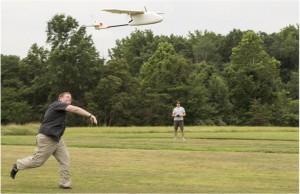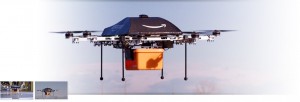I have always admired mobile veterinary practitioners, especially because of their ability to find remote farms or stalls. That was before GPS and cell phones. Other problems included what to bring into the field, and how to keep lab samples fresh and accurate.
DIAGNOSIS
Regarding diagnostic sample submission, the concern with drones was that the jostling might affect the sample results. Good research was done on the subject. “A fixed-wing aircraft was selected over other aircraft types, such as helicopter or multi-rotor, because it has the best range capability for a given take-off weight, is least expensive, and is least mechanically complex.”
The samples were not affected by the delivery method, and on the positive side, eliminated the degradation involved with delay. So, tomorrow you’ll just take one of your stock drones from your truck, enclose the sample, tap the location (send to your base, or directly to the referral lab) and toss it into the air. The research included landing as a “belly skid” but apparently even that did not affect the lab sample accuracy. 
For the Day After Tomorrow, this, “Immediate Sample Submission” concept in regular practice might eventually affect both the jobs of the referral lab pickup drivers, as well as the need for in-hospital lab equipment.
TREATMENT
As veterinary medicine continues to evolve, it will become less acceptable to “make do” with what instruments or medicine you have in the field. Today, you’d ask the person to bring the animal into the clinic, or reschedule when you can return with the drug or instrument needed. Tomorrow, it looks like the future will include the option to have what you need sent by drone.
This might mean ordering veterinary supplies via Amazon Prime Air. Here is the prototype of the Amazon Drone that will soon be delivering special order items to your hospital.
However, it is more likely that the item you need is located right now in your base veterinary hospital. You’ll just text your request (including your GPS location) to your office. There, your assistant will take a drone, put the item(s) inside, and send it to your GPS location, arriving in minutes.
According to an article in “Popular Science” the hold-up on drone use in human and veterinary medicine is a combination of the legislative ability to agree on FAA Regulations, and the conservative nature of the human medical community to adapt to change. Drone use to enhance diagnosis and treatment, and lots of other innovations would likely move much more quickly if veterinarians were at the lead.
Rolan
If the drone images in the email don’t appear, click on “You may view the latest post at..” where you can also review previous posts.
